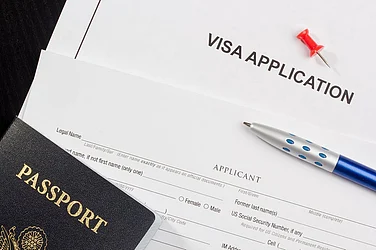In the era of quick commerce, food delivery platforms have become the go-to solution for people to satisfy their cravings with a few taps on the screen. Whether it is convenience, indecisiveness, or the simple pleasure of enjoying a meal without the hassle of cooking, millions of Indians have embraced food delivery services. However, beneath the allure of this ease, a complex web of hidden charges silently adds up to your total bill.
A recent report by Mavericks India, a marketing agency, underlines various hidden charges and costs associated with popular food delivery platforms like Swiggy, Zomato, and Magic Pin. The hidden costs embedded in food aggregator services may include delivery fees, packaging charges, and the utility of premium subscriptions like Zomato Gold. A comparison is made between pricing on restaurant-owned delivery platforms and above mentioned aggregator platforms.
By diving into how these platforms’ pricing works, which on the surface looks seamlessly affordable, there is a range of additional fees that you may not even realise you are paying.
Growing Dependence On Food Delivery Applications
Have you ever felt the need to satisfy that strong craving to eat pizza, pasta, or pastries? In the era of instant gratification, getting food delivered to your doorstep whenever and wherever you desire is nothing short of dependence, especially for Gen-Z and the Gen-Alpha, who would have grown accustomed to this ease of living.
Says Chetan Mahajan, Founder and CEO of The Mavericks India, “As convenience drives more consumers towards food aggregators, the hidden costs of delivery, packaging, and perceived membership benefits can often add up to a significant financial drain over time.”
“According to behavioural economics, consumers are more likely to accept dispersed, smaller fees, than a large lump sum, which potentially explains the cost breakdown of these aggregators,” he adds.
Hidden Prize Puzzle On Online Food Delivery Bills
As per the report, the overall ecosystem costs generated by online food delivery platforms amount to Rs 9,000-11,000 crore annually. So while individual orders might seem affordable, the cumulative financial impact for Indian households can be steeper than it shows. To uncover these hidden costs, the report analysed price data from over 50 restaurants, (providing both vegetarian and non-vegetarian dishes) across the three aggregator platforms.
The prices on these aggregator platforms were compared with those on the restaurants' own platforms by adding each item to the cart one at a time to capture the most accurate pricing data and maintain consistency. The analysis broke down various price components, including:
- Base price of the item
- Delivery fees
- Packaging and handling charges
- Platform-specific fees
- Total GST (including restaurant and delivery GST)
The report highlights the following breakdown of costs according to its findings:
1. Restaurant Channels v/s Aggregator Fees: An average aggregator premium of Rs 46 per dish (in hidden costs) is levied as compared to delivery orders placed on the restaurant’s channels. This translates to an additional annual financial burden of at least Rs 12,000 for the average Indian household in major metro/ tier-1 cities, the study states.
2. Packaging Surprise: Food aggregators charge Rs 2 more for packaging than restaurants, even though the packaging remains the same. Though this may seem insignificant for an individual order, when added up, this charge makes up for Rs 400 crores of the annual ecosystem revenues.
It seems that restaurants with more branches tend to charge lower fees. Their delivery and packaging fees range from Rs 26 to Rs 118 depending on the scale of the restaurant, the report finds.
3. Delivery Charges: The report reveals incremental differences in delivery fees, such as 150-200 per cent higher delivery charges on online food deliveries. It states that where 46 per cent of restaurants don’t charge any delivery fees on their owned channels, most of them do indicate it on aggregator platforms.
Moreover, delivery fees for dine-in restaurants have been found to be 6.5 higher on average compared to delivery-first restaurants on aggregator platforms.
4. Membership Myths: Are the subscription benefits really helpful to members? According to the findings, a prominent aggregator’s premium subscription offers limited added value, with non-members often accessing similar benefits for orders over Rs 199.
5. Sweeter The Tooth, Heavier The Bill? Well, the report finds that desserts incur a 15 per cent premium on aggregator platforms, while vegetarian items see an 11 per cent price bump compared to non-vegetarian food options.
Bring Me Food: But At What Cost?
As food delivery becomes an integral part of urban living, this data hints at the possible future of the industry. Concepts such as drone deliveries, predictive meal options based on your eating habits, and even aggregators setting up their own packaging businesses are all floated as potential and upcoming trends. While these advancements prime more convenience, they could also drive up your online food delivery costs even higher.
Would consumers accept these costs when presented in smaller amounts rather than large sums? Given how one may ignore a packaging fee of Rs 2 and accept a Platform fee of Rs 4 - consumers may often overlook such charges when levied in small increments without feeling the pinch. However, it is important to know the overall costs this puts on Indian Households when put together as a whole.















